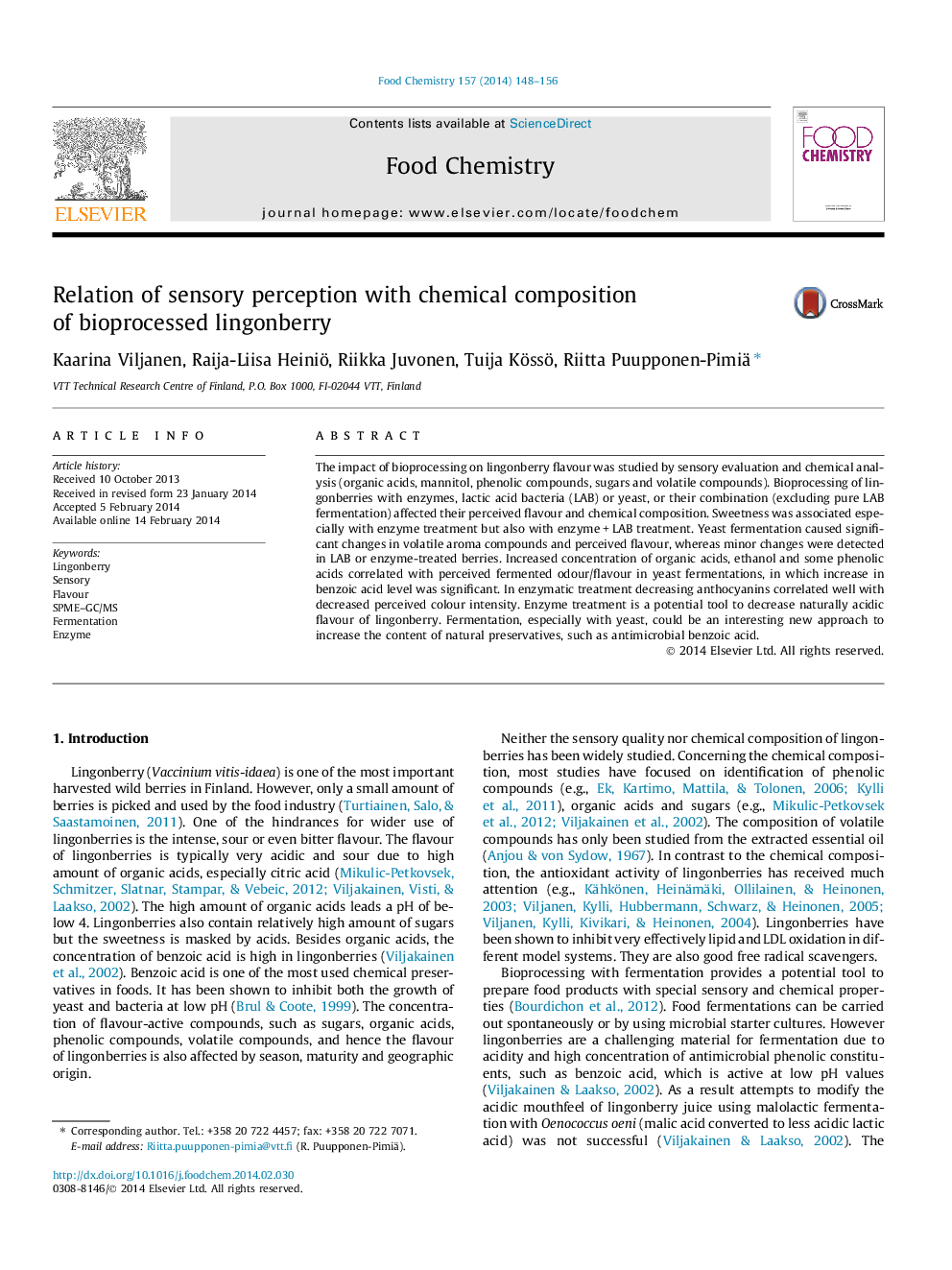| Article ID | Journal | Published Year | Pages | File Type |
|---|---|---|---|---|
| 1184567 | Food Chemistry | 2014 | 9 Pages |
•Microbes and enzymes as natural tools used to modify flavour of lingonberries.•Enzyme treatment alone or together with LAB fermentation produced the most sweetness in lingonberries.•Yeast fermentation increased concentration of the natural preservative benzoic acid in lingonberries.
The impact of bioprocessing on lingonberry flavour was studied by sensory evaluation and chemical analysis (organic acids, mannitol, phenolic compounds, sugars and volatile compounds). Bioprocessing of lingonberries with enzymes, lactic acid bacteria (LAB) or yeast, or their combination (excluding pure LAB fermentation) affected their perceived flavour and chemical composition. Sweetness was associated especially with enzyme treatment but also with enzyme + LAB treatment. Yeast fermentation caused significant changes in volatile aroma compounds and perceived flavour, whereas minor changes were detected in LAB or enzyme-treated berries. Increased concentration of organic acids, ethanol and some phenolic acids correlated with perceived fermented odour/flavour in yeast fermentations, in which increase in benzoic acid level was significant. In enzymatic treatment decreasing anthocyanins correlated well with decreased perceived colour intensity. Enzyme treatment is a potential tool to decrease naturally acidic flavour of lingonberry. Fermentation, especially with yeast, could be an interesting new approach to increase the content of natural preservatives, such as antimicrobial benzoic acid.
